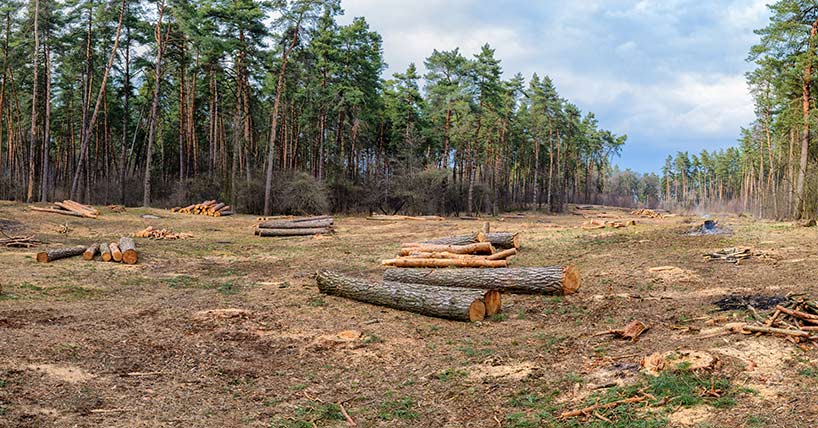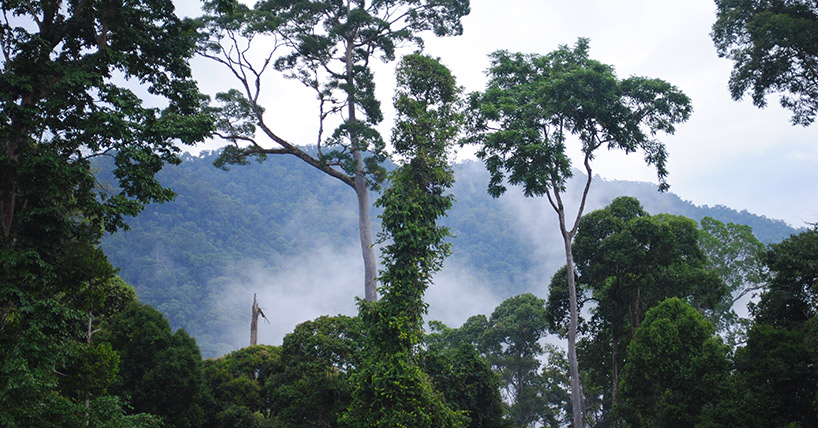Logged forests
Logged forests retain ecological value - if not pushed too far
Published on: 18 July 2024
Logged forests can still have ecological value, new research reveals.
In a new paper published in Nature, Newcastle University scientists led by a team at imperial College London, re-emphasize the value of primary forests for both climate and biodiversity alongside forests that have previously experience disturbance.
Looking at data from 127 studies, encompassing understorey and canopy plants, mammals (including bats), birds, reptiles, amphibians, fish, and invertebrates (including beetles, lepidopterans, ants and spiders), the team showed that lightly logged forests are able to recover from disturbance induced changes in structure and functions. However, they also highlight that different wildlife species have variable responses to forest degradation.

Impact of degraded tropical forests to the conservation estate
Marion Pfeifer, Professor in Forest Landscape Restoration at Newcastle University, and co-author in this study says: “In my view, the study affirms that using forests for resources, if done sustainably, is possible from an ecological viewpoint. The cross-taxa evidence considered in this research suggest that there sustainability ends depends on the level of tree biomass that gets removed, and it is here estimated at as a biomass extraction level of 29 %.
“Forests that are logged experience profound changes in their biophysical structure, affecting habitat availability and altering microclimate. Logged forests have more open canopies and tend to be hotter and less humid.
“Our research has previously shown that forest canopies matter for biodiversity, by impacting the microclimates that wildlife gets exposed to. Some species can tolerate or adapt to these changes, but others are very sensitive to them.
“Logged forests also tend to be more fragmented, with roads for access traversing the forest landscape. This increased accessibility has other impacts, which can be mitigated for, if explicitly considered in conservation actions for logged forests.
“Hunting for trade and bushmeat is an important factor affecting mammals and birds, in particular in forests in South-East Asia. ‘Empty forests’ are increasing in Asia and elsewhere, characterising forests that are losing animals to overexploitation, with profound consequences for how these ecosystems function.”
The study provides clear evidence that lightly logged forests - and thus associated biodiversity and ecological values - can and should be added to the conservation estate. This could be strategically designed in terms of governance, such that hunting pressure, which may increase with increased accessibility of forests, may need mitigating for through management rules.
Professor Pfeifer points to the research implemented by her group, which outlines how maintaining biodiversity in forests at landscape scales is good for forests and for people, whether that is birds dispersing rainforest tree seeds through agroforestry landscapes in the Philippines or wildlife providing pest control functions to farmed land found adjacent to forests.
Co-author Professor Yit Arn Teh, from the School of Natural and Environmental Sciences at Newcastle University, said: “Tropical rainforests are critical not only for conserving biodiversity, but also for reversing the effects of climate change, providing clean water and food, and supporting rural livelihoods.
“In this UN Decade on Ecosystem Restoration, we need to be able to identify which tropical rainforests need the greatest attention and the most careful management, so that we are able to use our limited resources effectively to conserve and restore these globally important ecosystems for the betterment of rural communities, nature and Earth’s climate.
“Knowledge of key destruction thresholds is crucial, as these represent real-world ‘red lines’, which, when crossed, can lead to irrevocable loss of biodiversity (e.g. species extinctions) or such massive changes in function that the subsequent cost of ecosystem restoration can be incredibly high.”
Lead researcher Professor Robert Ewers, from the Department of Life Sciences at Imperial College London, said: “There has been a tendency in conservation to think of pristine forests as the only ones worth investing in – that logged forests were not worth looking at.
“What we’ve shown is that the potential ‘conservation estate’ is much larger than we thought, and while pristine forests are shrinking worldwide, this doesn’t mean all hope is lost, and there are other forests we can protect to preserve biodiversity.”
Adapted with thanks from Imperial College London. Read the original press release.
Reference
Ewers, R.M., Orme, C.D.L., Pearse, W.D. et al. Thresholds for adding degraded tropical forest to the conservation estate. Nature (2024). https://doi.org/10.1038/s41586-024-07657-w




